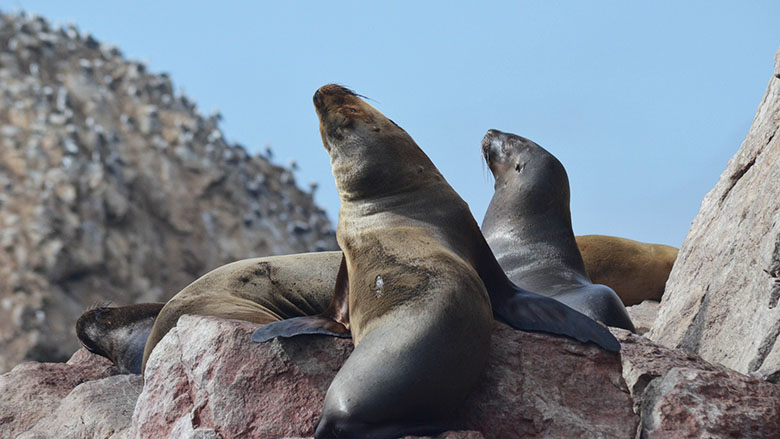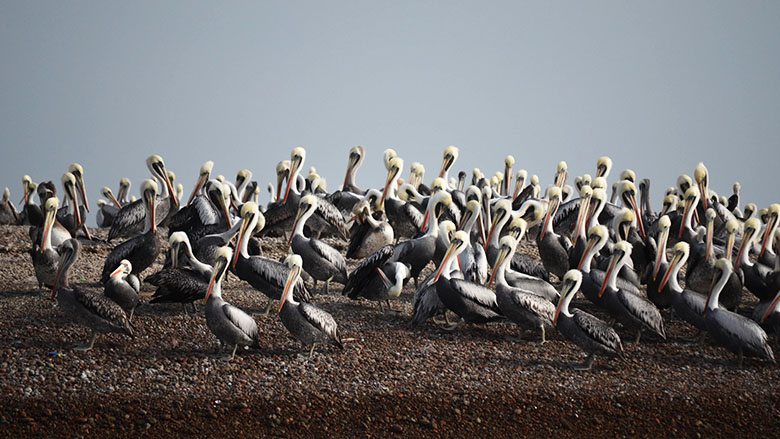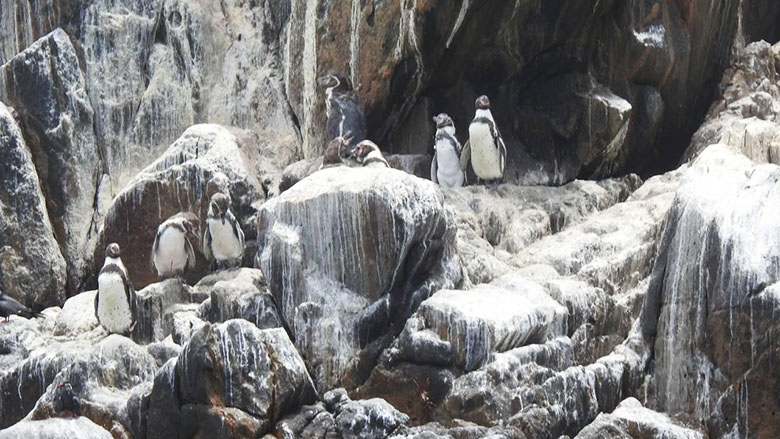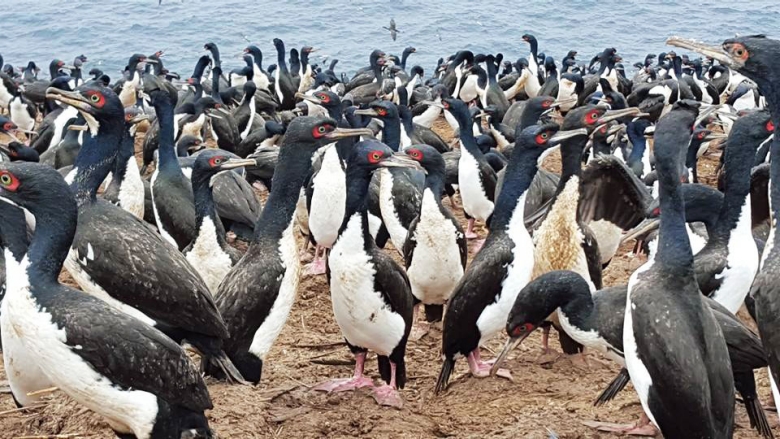
Results
Between 2013 and 2019, the project helped to improve the overall management of the marine and coastal ecosystems of the Guano Islands, Islets, and Capes National Reserve System and to protect biological diversity in pilot sites through contributions and improvements in various key areas. Results achieved include:
- Areas under enhanced biodiversity protection expanded from 817 hectares to 2,952 hectares.
- The number of staff from SERNANP and other agencies trained on marine and coastal protected area (PA) management topics increased from 10 to 484 individuals, 30 percent of whom were women.
- Detailed zoning, mapping, and categorizing of PA based on conditions in the natural environment and specific protection needs were achieved in 10 pilot sites. This supported the development of a terrestrial and marine biological baseline, required to determine the state of conservation in the Reserve, and established conservation categories (protection, restoration, sustainable exploitation).
- Populations of the Humboldt penguin, an endangered seabird living in Reserve, were maintained, and even increased, with 8,025 registered by project end.
- The use of drones helped strengthen monitoring capacity in less accessible areas, extending coverage and increasing generation of key information for decision making regarding extractive activities to ensure they are undertaken with conservation objectives in mind.
- Critical improvements were made in seven indicators of the Global Environment Facility (GEF) Biodiversity Tracking Tool, including delineation of areas, categorization of conservation status, and the development and implementation of site-specific management plans.
- SERNANP’s capacity at the local level was improved through collaborative subprojects aimed at increasing the participatory management and capabilities of local stakeholders, benefiting a total of 5,240 people, 25 percent of whom are women.
Bank Group Contribution
The World Bank, through the Global Environment Facility, provided US$ 8.92 million to the Peruvian Trust Fund for National Parks and Protected Areas to support the preservation of the Guano Islands, Islets, and Capes National Reserve System. The funds were fully disbursed by the end of the project.
Partners
The project established and strengthened important communication channels and the formalization of joint-work plans with relevant key stakeholders. This helped to develop a shared sustainable management vision for the Reserve. SERNANP was supported through collaborative consultation and negotiation processes, resulting in the development of cooperation agreements with AGRORURAL, Ocean Institute of Peru (Instituto del Mar del Peru), the French Research Institute for Development, and the National University San Luis Gonzaga of Ica. Agreements included joint monitoring protocols for key bird species and surveillance and control of illicit activities. GEF financing was complemented with US$ 2 million from Germany’s Kreditanstalt für Wiederaufbau (KfW).

Beneficiaries
The project generated a number of benefits, direct and indirect, relating to improvements in the overall management of marine and coastal ecosystems. With more effective management of marine and coastal areas in place, the natural capital in the Reserve will remain an integral and important contributor to sustainable growth and development. Improving monitoring capacity and surveillance resulted in public benefits from greater conservation and preservation achievements, while private benefits were generated through the increase of tourist revenues. In addition, public servants and private individuals, including fisherfolk, received useful training. A total of 5,240 persons benefited from the project.
Moving Forward
The project helped increase awareness about the benefits of sustainable management of biodiversity in the Reserve, resulting in increased engagement among local stakeholders who became collaborators in economic and conservation activities. Likewise, the project established cooperation mechanisms between agencies that have not traditionally worked together. As a result, collaboration among agencies improved, benefiting the overall management of the Reserve. Other agencies have demonstrated interest in entering into similar arrangements with SERNANP. An endowment fund has been established and is generating returns that, together with income derived from tourism, will contribute to the Reserve’s financial sustainability in the medium to long term.

World Bank.



